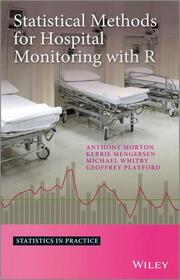Detailansicht
Statistical Methods for Hospital Monitoring with R
Statistics in Practice
Morton, Anthony/Mengersen, Kerrie L/Playford, Geoffrey et al
ISBN/EAN: 9781118596302
Umbreit-Nr.: 5123943
Sprache:
Englisch
Umfang: XXI, 404 S.
Format in cm: 2.3 x 25.1 x 17.7
Einband:
gebundenes Buch
Erschienen am 23.08.2013
Auflage: 1/2013
€ 77,90
(inklusive MwSt.)
Nachfragen
